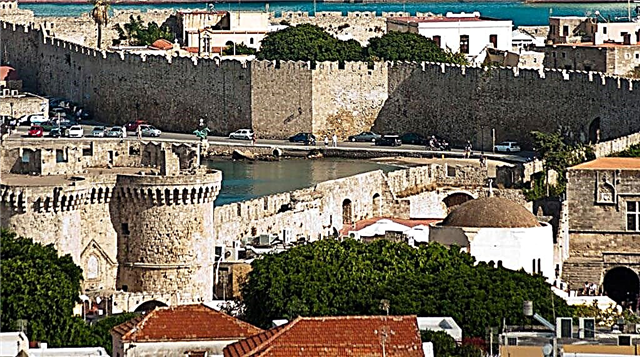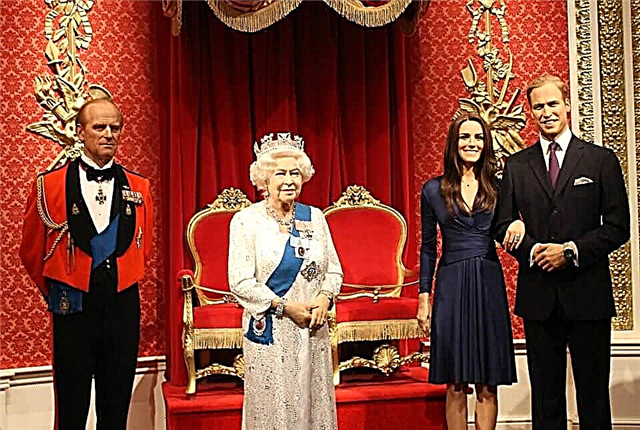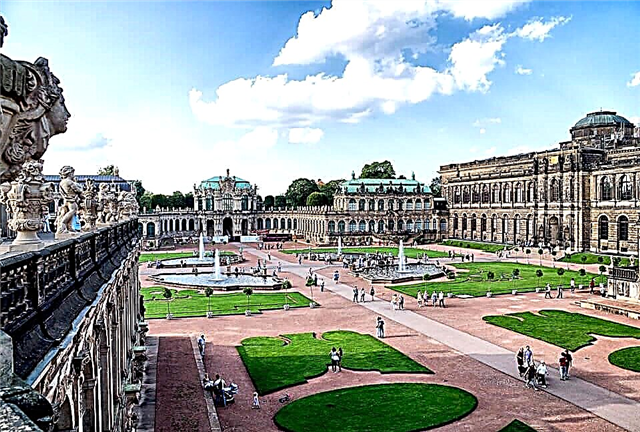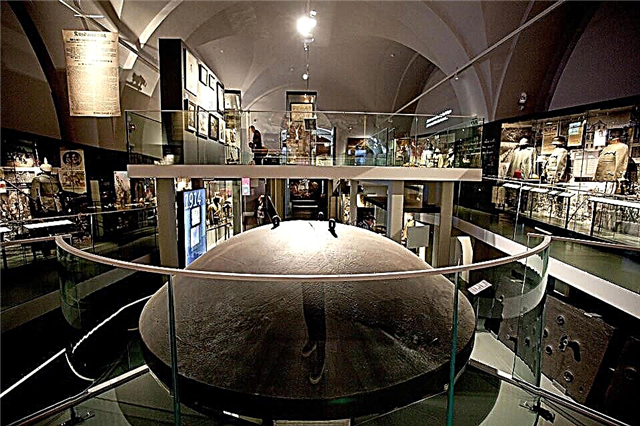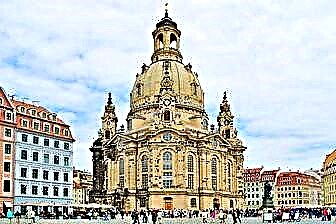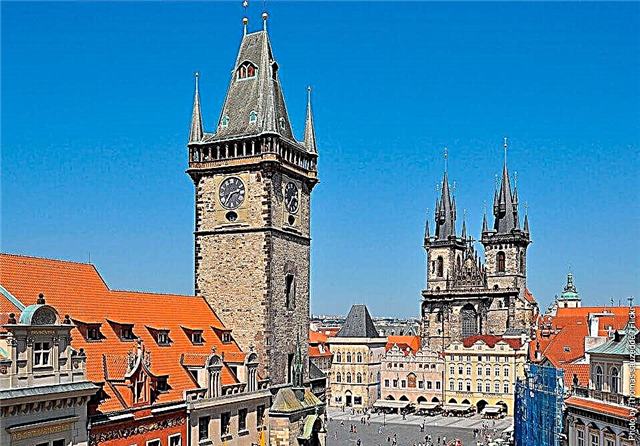The Old Town Hall is the most popular point on the map of any tourist who decides to visit Prague. It is the dominant structure of the Old Town Square, which invariably attracts hundreds of thousands of travelers from all over the world.
History

The Old Town Hall was founded in 1338, and this is an extremely unusual historical site, as it is assembled from various small houses. Its expansion continued in 1458 when the so-called “House of Miks” was added to the western side. Two more houses "At the Golden Moon" and "At the Rooster" were added at the end of the seventeenth century. The Minuta house was sold to the city council for the expansion of the town hall in 1896. The Miksha House was rebuilt in the neo-Renaissance style in 1879-1880. The author of the project was Antonin Baum. This wing was destroyed in the last years of World War II during the Prague Uprising.

As in every medieval town hall, there was a prison here at one time. The prisoners were lowered into a cell, and in fact, a hole in the ground, which was then covered with stones. In a word, they were buried alive. Over the course of the twentieth century, many architectural competitions were held, the purpose of which was to identify the person who would be able to make the right project for the expansion and reconstruction of the town hall. But all the competitions ended without a winner, or their projects were never implemented.
Description
Built in 1338, it is one of the main tourist attractions in Prague. Much of its popularity is due to the famous astronomical clock, which daily heralds the arrival of a new hour with a bizarre performance. Once in the town hall, the city council functioned with might and main, but now for a set fee anyone can visit it, and lovers can even have a wedding. Unfortunately, the original appearance of the town hall has not survived - the east wing was destroyed in the year of the end of the Second World War.
Old Town Hall architecture

The Old Town Hall is essentially five buildings, different in style, but assembled into a single complex. These buildings are former mansions of Czech nobles, which were gradually bought up by the city council. In general, all facades are decorated in the Italian neo-Gothic style. The dominant structure of the Old Town Hall is a 69.5 meter high tower, built at the end of the fourteenth century, with an ornate window and a chapel on the east side.

The interior decoration of the rooms perfectly matches the imposing exterior. The spacious entrance hall was decorated during the refurbishment of the late fifteenth century. The two large mosaics created by the Czech architect Vojtech Ignac Ullman and designed by Mikolas Ales are truly impressive. The western wall mosaic theme is taken from national myths.
It depicts Princess Libuše predicting the greatness of Prague. On the opposite wall is an allegory entitled “Slavdom’s Homage to Prague”. The modern renovation of the second lobby has brought changes to the original architecture. There is a bronze statue (1885), cast by the sculptor Josef Vaclav Myslbek, which also embodies the plot of the folk myth - the statue depicts the legendary singer Lumir, accompanied by the metaphorical figure of the Song.

A staircase designed by Jan Bielski leads to the first floor. The rooms here are adapted for wedding ceremonies. The façade is dominated by a wide Renaissance window. On the second floor there is a session room and a council room.
The latter is one of the most beautiful rooms in the town hall. Despite numerous reconstructions, she managed to preserve the appearance, created back in 1470, to the maximum. The walls are decorated with Gothic paneling, emblems, coats of arms of the old city. The most precious piece of furniture is considered to be a wooden figure of Christ from the beginning of the 15th century.
Chapel of the virgin mary

The chapel is located on the ground floor. Visitors can admire unique stained glass windows that actually depict the figures of the apostles and how the astronomical clock works. Outside, the chapel can be seen from the pentahedral bay window, decorated with the coats of arms of the local lands.
On the right side, the chapel is not surrounded by anything - once there was a Gothic portal here, but it was destroyed during the Second World War. Surprisingly, the chapel was lit almost five times. Initially, services were held here, announcing the beginning of the council meeting, as well as various festive events and liturgies. Currently, only national events and weddings are held in the chapel of the Virgin Mary.
Orloj chimes

One of the most mysterious places in Prague that attracts thousands of tourists every day is the Astronomical Clock of the Old Town Hall. Orloi's chimes can be roughly divided into three parts: the first contains small windows, in which 12 apostles appear every hour and bow to the waiting crowd. Each apostle holds a certain symbol: St. Peter has a key, St. Matthew has an ax, St. John has bowls. The four figures below them are directly involved when the apostles appear.
The skeleton flips its hourglass and rings a bell, announcing the end of life; Turk - a symbol of a comfortable life - nods his head, and then shakes it, not wanting to surrender to death. The figure depicting vanity looks in the mirror, and the curmudgeon (a symbol of avarice) shakes his wallet full of money. At the end of this peculiar performance, the crow of the cock heralds the beginning of a new hour.

The second section (above) shows the movement of the planets. Naturally, they express a vision of the universe of past generations, where the Sun revolves around the stationary Earth. At the very bottom there is a calendar wheel, in which, in addition to the coat of arms of the Old City, the signs of the zodiac and months are depicted. There are 365 notches on the edge of the wheel - the wheel turns one notch every day, thereby making a full revolution in a year.
In addition, the clock shows four different times: Central European is depicted in Roman numerals along the edge of the upper face, Old Bohemian is shown in Gothic numbers (the day begins at sunset), there is also Babylonian time, where summer lasts much longer than winter and, finally, heavenly time, depicted by a small star on the zodiac cross.

According to some researchers, you can see that the clock is divided into four imaginary levels. Ancient alchemists and astrologers believed that the universe was made up of four elements: earth, water, air, and fire. As a matter of fact, it is these elements that are represented in the design of the astronomical clock. The earth is the watchmaker's front doors, water is the dial, air is the astrolabe and, finally, fire is the apostles and the rooster. But does this represent the Cosmic Universe? It's hard to guess now. Let's try to look at history and stretch a thin thread of knowledge today.
At an early stage of creation in 1402, a classic clock was installed on the tower of the Old Town Hall, and a couple of years later - a large bell. The first record of the Prague Astronomical Clock is dated October 14, 1410. Based on this document, the watch was built by the watchmaker Mikulas of Kadan, who created it using the calculations of Jan Schindel - at the time, the best mathematician and astronomer in Prague. The appearance of the clocks seen by modern travelers was designed by craftsmen Jan Hanusz and Jan Taborski. The sculptural decoration of the clock, fashioned by the famous architect Peter Parler, is also of no less value.
But back to 1410.At that time, the most ancient parts of the clock were made - the movement itself and the astronomical dial. Historians have long been convinced that the clock was created by Jan Rezem in 1490, who was widely known under the pseudonym Mister Hanush. But he was not the designer of the astronomical clock, but only repaired it between 1475 and 1497. At that time, he significantly modernized them. After his death, watchmaker Jakubu spent hours, then - Vaclav Zvenek, and after him - Jan Taborski. Each of them made a small contribution to the adjustment of the clockwork.

Over the long period of its work, the watch has been repaired several times. Sometimes they even stopped. In the eighteenth century, people were not too interested in timing mechanisms, the Orloi chimes were forgotten, and their condition left much to be desired. Fortunately, they were subsequently renovated thanks to Professor Antonin Strand. He managed to convince the government of Prague to restore an artifact so significant for history. The watch was restored by the watchmaker Simon Landsperger between 1787 and 1791. A few years later, statuettes of the apostles were installed in the clock, and after another reconstruction (between 1865 and 1866) a rooster was added.
Once again, the clock was badly damaged during the 1945 Prague Uprising. The town hall was on fire, resulting in significant damage. The flame touched not only the wooden structure, but also the clockwork with the statues of the apostles. Thanks to the incredible efforts of the Vesecki brothers, the watch was repaired in 1948 and still works perfectly today.
South facade of the town hall

When in 1458 another house was bought to expand the facility, global work began on the interior decoration of the building, which could not but affect its outer side. This is especially noticeable from the south side. The reconstruction of the entrance hall on the ground floor of the Wolflin house culminated in the construction of a beautiful new portal in the late Gothic style, which was very characteristic of Czech culture. The structure itself dates from the fifteenth century, but the double wooden door was erected at the end of 1652.
The windows of the southern facade belong to the twenties of the sixteenth century, and their design clearly shows the style of the Renaissance. The central window is original, while the other two were added in 1731. In truth, these side windows are in the same style as the main one, but the visors above the pilasters are in a distinctly Gothic style. The southern facade is a wonderful example of architectural thought that you can admire and admire. In addition, this is the first thing that travelers see if they move from the side of Wenceslas Square.
Opening hours and ticket prices
Monday: 11:00 - 19:00
Tuesday - Sunday: 9:00 am - 7:00 pm
Entrance fee is 250 CZK, family ticket is 500 CZK.
The price includes entrance to the tower, historic rooms and the Chapel of the Virgin Mary. Printed guides in 13 languages are also available for tourists.
Where is it located and how to get there
The Town Hall is located on the famous Old Town Square - a place that every decent tourist visits when in Prague.
Address: Staromestske namestí, Prague 1
Tram: No. 2, 18 (daytime), 93 (nighttime), stop - Staromestska.
Metro: line A, Staromestska station.



